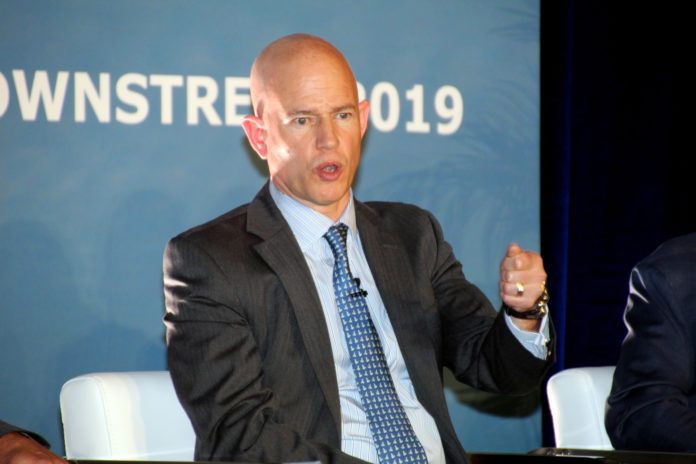Nearly 7,000 Gulf Coast energy leaders at a recent downstream petrochemical conference in Houston quickly got down to the business of addressing their biggest concern: the unprecedented “second wave” of capital spending and its corresponding risks.
The opening session panel at Downstream 2019 tackled the issue head on, focusing particularly on the confluence of the second wave with an impending surge of liquefied natural gas investment. The conference, held at the George R. Brown Convention Center June 11-12, provided a venue for sharing best practices across the entire value chain.
In Louisiana alone, 13 LNG terminals are proposed, approved and awaiting construction, or underway, according to the Federal Energy Regulatory Commission.
“The demand around LNG is going to peak around 2022,” says Stuart Bradie, CEO of KBR in Houston. “That’s going to create about 100 million tons of shortfall, which is being driven by China as they move toward cleaner burning fuels. We don’t see that demand slowing at all, and it takes four to five years to build an LNG project, so we’re already a little behind in that cycle.”
Alasdair Cathcart, president of Bechtel’s Oil, Gas and Chemicals business in Houston, says LNG will undoubtedly create strains on Gulf Coast resources, but he insists the construction industry can handle the load. “I think we have a very experienced and skilled workforce,” he says. “We really believe that the crafts are available, competent and committed, and that we can deliver the next wave of projects in the U.S. Gulf Coast safely, ahead of schedule and under budget.
“And with the shale explosion, as LNG’s chief feedstock, we’re at the right point in the cycle,” he added. “We see this going on for the next two, three, four years.”
Samik Mukherjee, group senior vice president of projects at McDermott in Houston, says owners and contractors are working collaboratively in the face of these challenges. “There are many things that happen in our business, whether it’s political risk, productivity risk, etcetera,” Mukherjee says. “Tariffs are becoming a big risk mitigation issue, for example. It takes a collaborative approach with the customer. It’s such a fluid situation, and customers are open to discussing how we can mitigate the risk.”
After headlining sessions each day, Downstream 2019’s program broke into five separate tracks targeting engineering and construction, reliability and maintenance, shutdowns and turnarounds, process engineering and technology, and supply chain and logistics. Opening the second day, former Navy Seal Marcus Luttrell, author of Lone Survivor, urged convention goers to “never give up” and “stay in the fight” during an inspirational talk about overcoming challenges.
Since its founding, the conference has become one of the world’s largest downstream industry events. Owner-operators comprise about 45% of attendees. The conference plans to move to Houston’s NRG Center in 2020 to accommodate growth.



